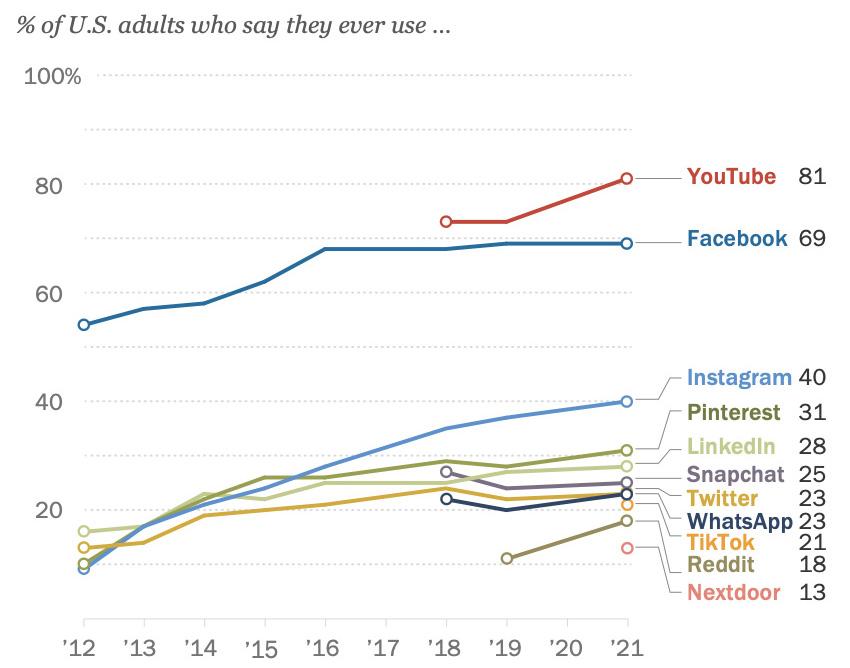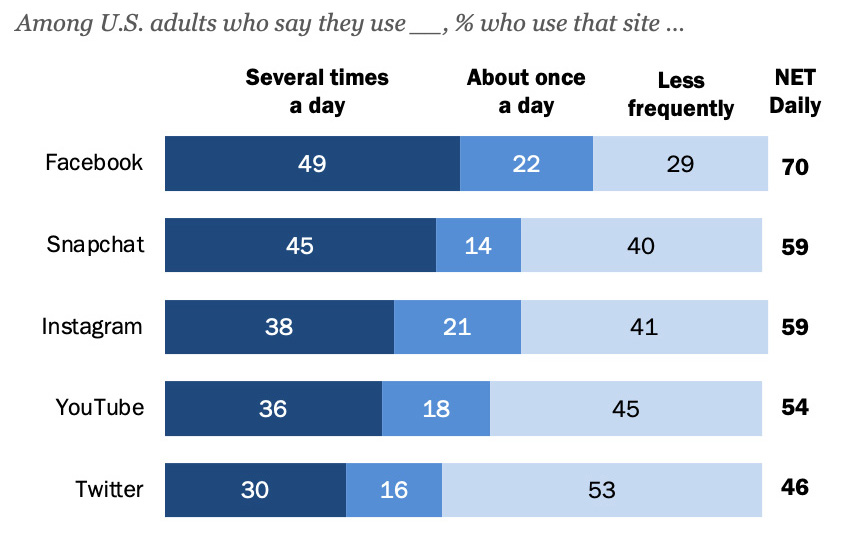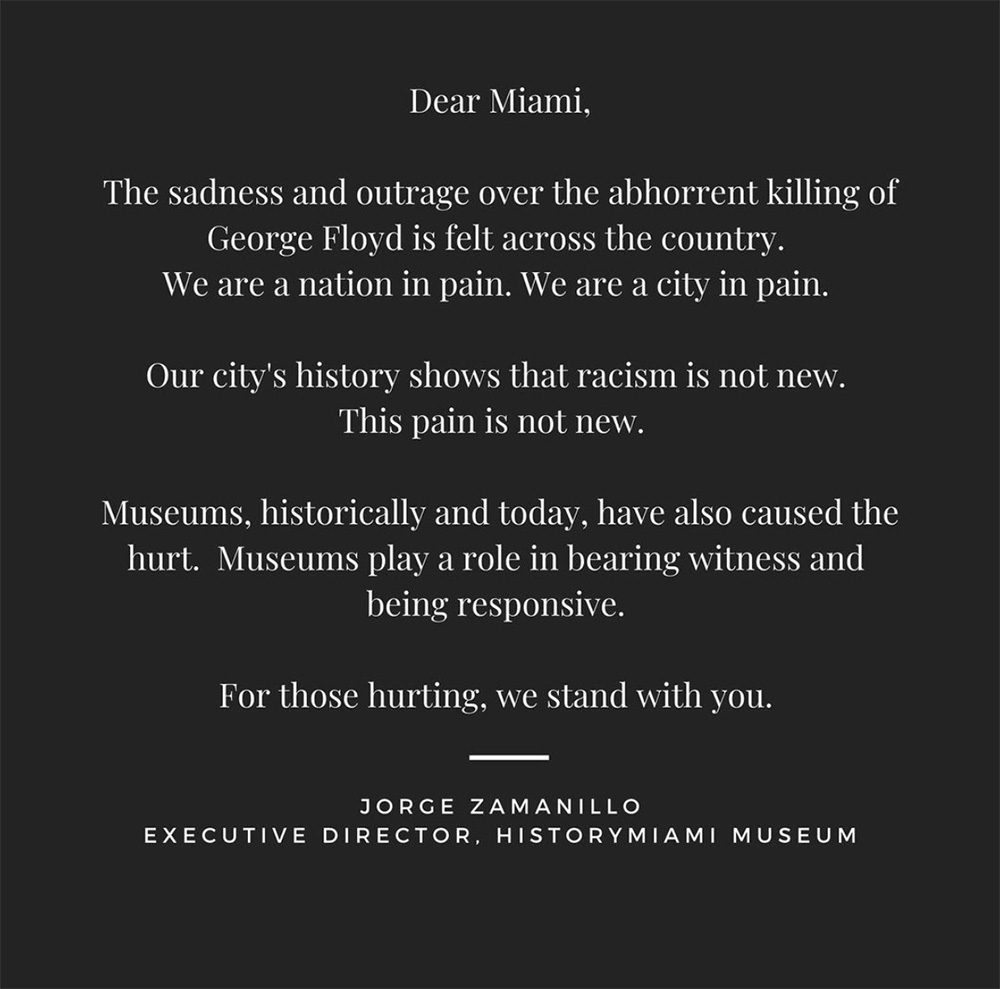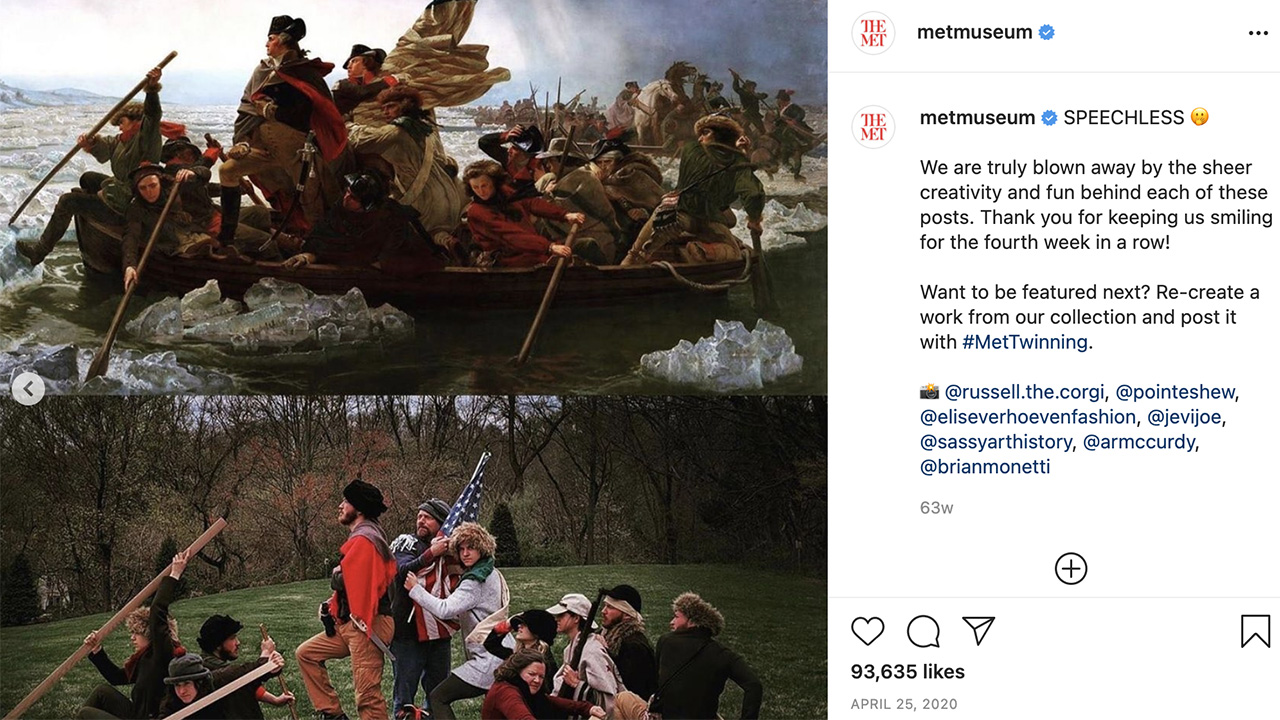Social media, which was increasingly becoming part of museums’ digital strategies pre-pandemic, had quite its moment last year. In between the Black Country Living Museum’s elaborate TikTok videos and the Cowboy Museum’s clever tapping of staff expertise, cultural organizations found a multitude of ways to keep audience engagement going on these apps despite global lockdowns. But who uses these platforms, and how? The Pew Research Center, in a new report, finds out.
In April, the fact tank, which conducts public polling and social research, released Social Media Use in 2021, part of its ongoing examination of how social media impacts American life and society. Carried out in the United States and District of Columbia from January 25 to February 8, the survey sampled 1,502 adults via telephone interviews, asking for the youngest adult available to participate. The study found that 72 percent of Americans use social media, with the main platforms discussed being YouTube, Facebook, Instagram, and TikTok — the latter making its first appearance in a Pew phone poll.

YouTube, Facebook, and Instagram continue to dominate the social media landscape in 2021, with YouTube and Reddit, in particular, recording significant growth since 2019. Image: Pew Research Center
Another platform entering the fray? Clubhouse, the social audio app that has reached 18 million downloads (up from 3.5 million in February) and now numbers 10 million users. According to a survey conducted by media researchers Edison Research, 44 percent of Clubhouse users use the app at least once a day. More crucially, Clubhouse’s popularity has spurred existing platforms such as Facebook and Twitter to develop social chat features, making social audio an upward trend to watch. Below are three more takeaways on social media’s recent trajectory.
Video reigns supreme

According to the survey, seven in ten Facebook users visit the platform multiple times a day; Snapchat follows closely. Image: Pew Research Center
According to Pew, video platforms are the most popular social media networks. This wasn’t always the case — in 2018, Pew found that Facebook was the most widely used of all social media apps, claiming the attention of some 68 percent of American adults. Throughout lockdown, though, YouTube has emerged as the most commonly used online platform, with 81 percent of respondents saying they use the site, up from 73 percent in 2019. Further, the report notes, “there’s evidence that [YouTube’s] reach is growing.”
For users between 18 to 24, the holy trinity of video platforms remains Instagram, Snapchat, and TikTok. “Being active on these sites,” Pew notes, “is especially common for younger users.” A marked majority of users aged between 18 and 29 say they use Snapchat (71 percent) and Instagram (73 percent) daily, with more than half reporting doing so several times a day.
Social issues engage

History Miami’s May 2020 social media post that acknowledged museums’ role in perpetuating social inequities. Image: History Miami on Instagram
As cultural institutions grow their presence on social media in concert with these platforms’ enlarged audience, what’s also worth considering is the kind of content that engages these viewers, especially younger ones. In Pew’s separate studies on the behavior of young social media users, Gen Z-ers and Millennials were found most likely to engage with topics like climate change and race — whether by liking, commenting, posting, or sharing such content — as compared to Gen X or Baby Boomers.
In short, social issues command attention as much as interaction. For museums, tackling such topics as racial and gender inequities, climate change, and the repatriation of colonial-era or looted art on their social platforms, though, should be more than a performative exercise, but backed with concrete action — young social media users are savvy creatures too. How museums take their public stances can be key in solidifying their current and future audience bases.
Social audio rises
Being invite-only and available solely on iOS has not stopped Clubhouse from exploding in growth and stature. As Edison Research’s survey found, 44 percent of users aged 18 and over used Clubhouse once a day, with the majority (70 percent) spending one to five hours per week on the platform. Thanks to a spate of high-profile appearances on the app (Elon Musk, most notably) and a format that speaks to our lockdown realities (intimate, candid, off-camera), the app has also spearheaded a social audio race.
Facebook and Twitter’s developments aside, social audio competitors are gaining steam. According to App Annie, a mobile data and analytics firm, apps such as Yalla, Tiya, and China’s Dizhua have attracted global users in the millions. Though some of these platforms have been live for years (Yalla since 2016 and Dizhua since 2019), Clubhouse’s emergence has boosted and inspired their growth. Dizhua, for one, is looking into inviting KOLs to its platform, mirroring Clubhouse’s own influential membership.
As of this moment, only a handful of museums and cultural institutions have official Clubhouse accounts. But even outside of the app, audio remains a space worth watching for arts organizations looking to extend their digital reach and meet the changing appetites of a mobile-first audience.



